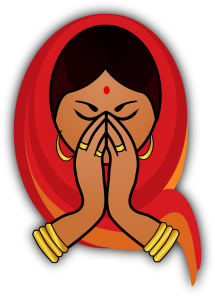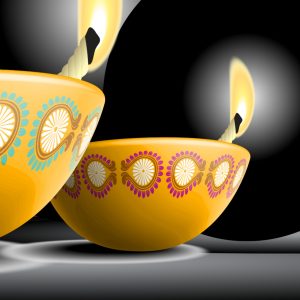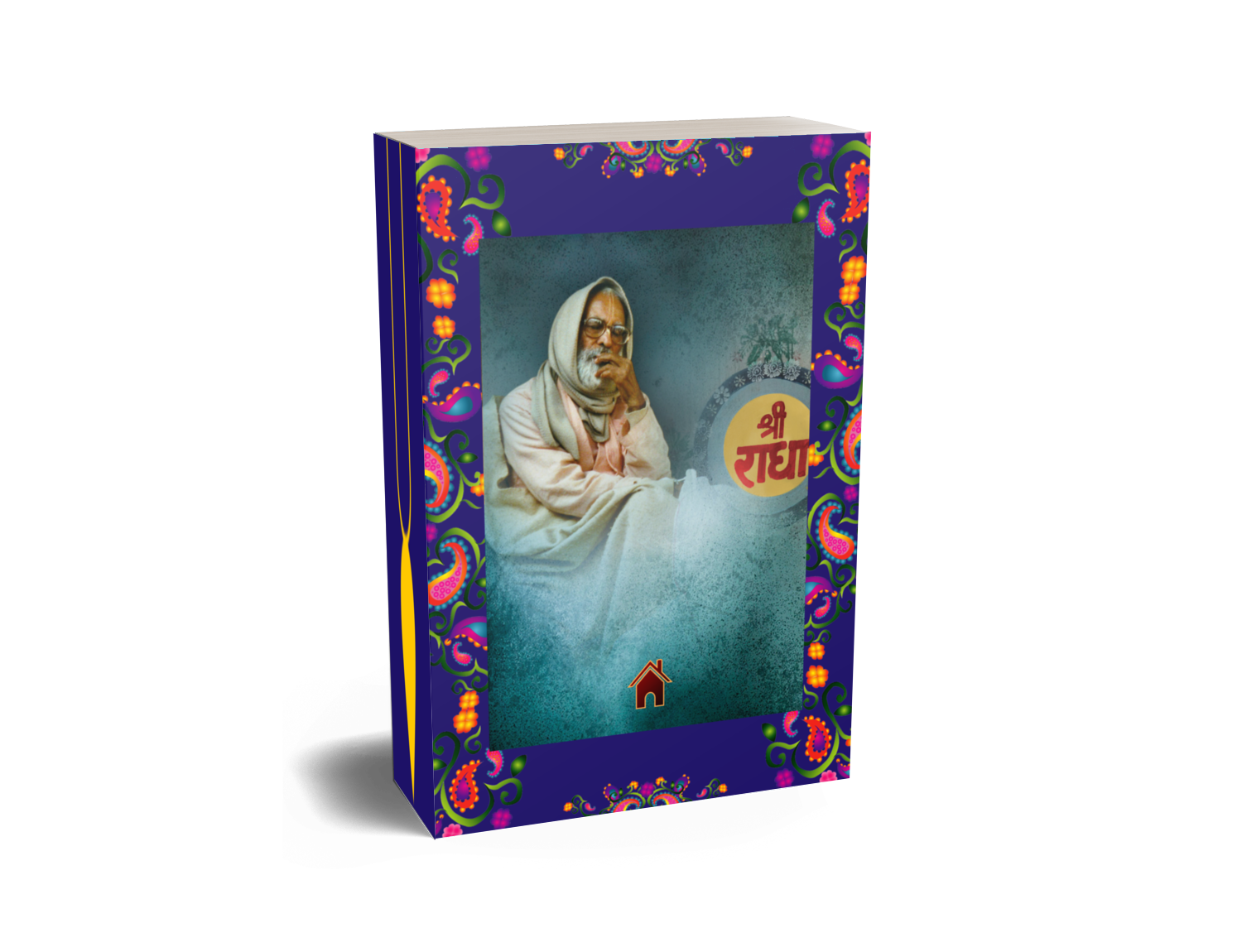

The following are transcriptions of conversations with Śrīla Bhaktivedānta Nārāyaṇa Mahārāja in Mathurā, India, on April 17, 2000
(In Mathurā, generally every day for about 15 minutes or a half hour before Śrīla Bhaktivedānta Nārāyaṇa Mahārāja 6.00 pm class, he gives informal darśanas. The following conversations took place on April 17th.)
Conversation I
Śyāmarāṇī dāsī: There is a statement in your Bhakti-tattva-viveka which seems to be different from what you usually preach. It says, “Ones niṣṭha intensifies and assumes the form of ruci. The sādhaka within whom such ruci has developed is called an uttama-adhikārī.” This means that when one reaches the stage of ruci (taste in devotional service), he is already an uttama-adhikārī.
Śrīla Bhaktivedānta Nārāyaṇa Mahārāja: Yes. We should try to reconcile all this. Ruci is a part of śuddha-sattva, and when śuddha-sattva comes, rati or bhāva (the stage of spiritual emotion just prior to prema) manifests. The fraction of this rati is ruci. In that case ruci is also a kind of rati. When ruci becomes more mature, then it is called aśakti (attachment). Then when aśakti is more condensed then it is still the same thing, but more condensed — it becomes rati. There is no difference. These are simply stages of maturity: the first stage, second stage, third stage, etc. When ruci comes as a part of rati, then the devotee is an uttama-adhikārī uttama-kaniṣṭha.
Śyāmarāṇī dāsī: When that ruci is present in the stage of rati, then as a fraction of rati.
Śrīla Bhaktivedānta Nārāyaṇa Mahārāja: You should know that ruci begins in śraddhā — in the form of 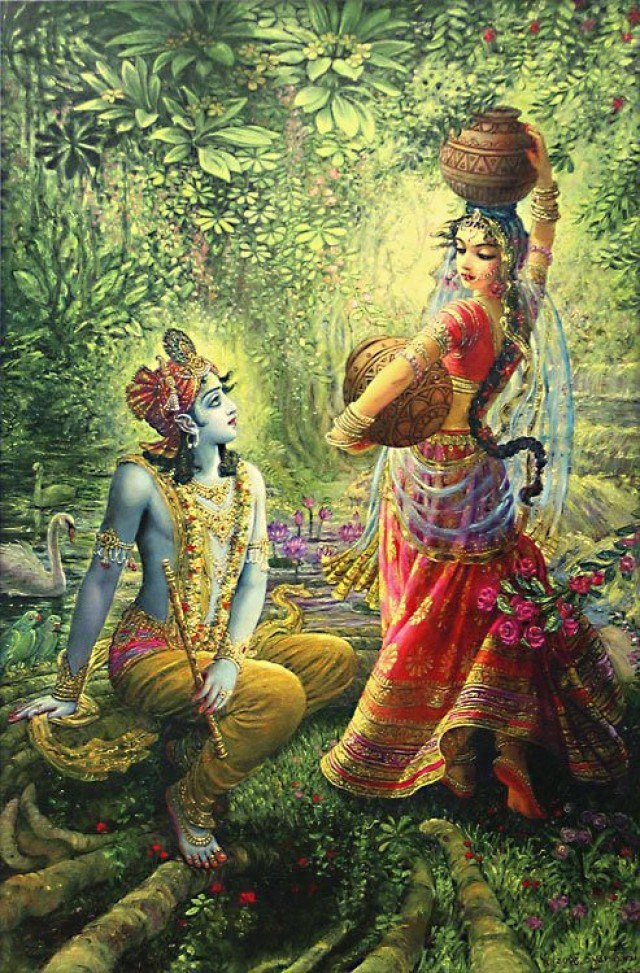 śraddhā. Only the names are different. In other words rati is there in the shape of śraddhā, and ruci is there in the shape of śraddhā. But gradually it develops. Only the names are different. The name is changed but it is the same thing. Ruci first appears in śraddhā and ultimately it comes towards the iṣṭadeva (the worshipable Deity — Rādhā-Kṛṣṇa.) A person who has such thick ruci has no taste for worldly desires and worldly things. He does not commit any aparādha (offences). Nothing. At that time his chanting of the holy name is pure. As Śrīla Bhaktivinoda Ṭhākura has explained in Śikṣāṣṭaka, such a person is always absorbed in Kṛṣṇa. Therefore he may be called ‘Mahā-bhāgavata’. But what class of bhāgavata? There are so many stages. He is called bhāgavata, but…
śraddhā. Only the names are different. In other words rati is there in the shape of śraddhā, and ruci is there in the shape of śraddhā. But gradually it develops. Only the names are different. The name is changed but it is the same thing. Ruci first appears in śraddhā and ultimately it comes towards the iṣṭadeva (the worshipable Deity — Rādhā-Kṛṣṇa.) A person who has such thick ruci has no taste for worldly desires and worldly things. He does not commit any aparādha (offences). Nothing. At that time his chanting of the holy name is pure. As Śrīla Bhaktivinoda Ṭhākura has explained in Śikṣāṣṭaka, such a person is always absorbed in Kṛṣṇa. Therefore he may be called ‘Mahā-bhāgavata’. But what class of bhāgavata? There are so many stages. He is called bhāgavata, but…
Śyāmarāṇī dāsī: Here it says, ‘uttama-adhikārī.’
Śrīla Bhaktivedānta Nārāyaṇa Mahārāja: Uttama-adhikārī here means uttama-kaniṣṭha. At the stage of ruci one is uttama-kaniṣṭha. At the stage of aśakti he becomes like an uttama-madhyama. Then, when rati comes, he becomes uttama-uttama. But uttama-uttama also has so many grades. When a person has prema, then he really becomes a mahā-bhāgavata.
Śyāmarāṇī dāsī: I thought you had previously said that one begins his uttama stage at the point of śuddha-sattva or bhāva.
Śrīla Bhaktivedānta Nārāyaṇa Mahārāja: But śuddha-sattva does not begin at once. It begins from ruci. We should reconcile it in this way.
Ananta Kṛṣṇa dāsa: Śrīla Viśvanātha Cakravartīpāda also says that uttama-madhyama is in aśakti. So there is 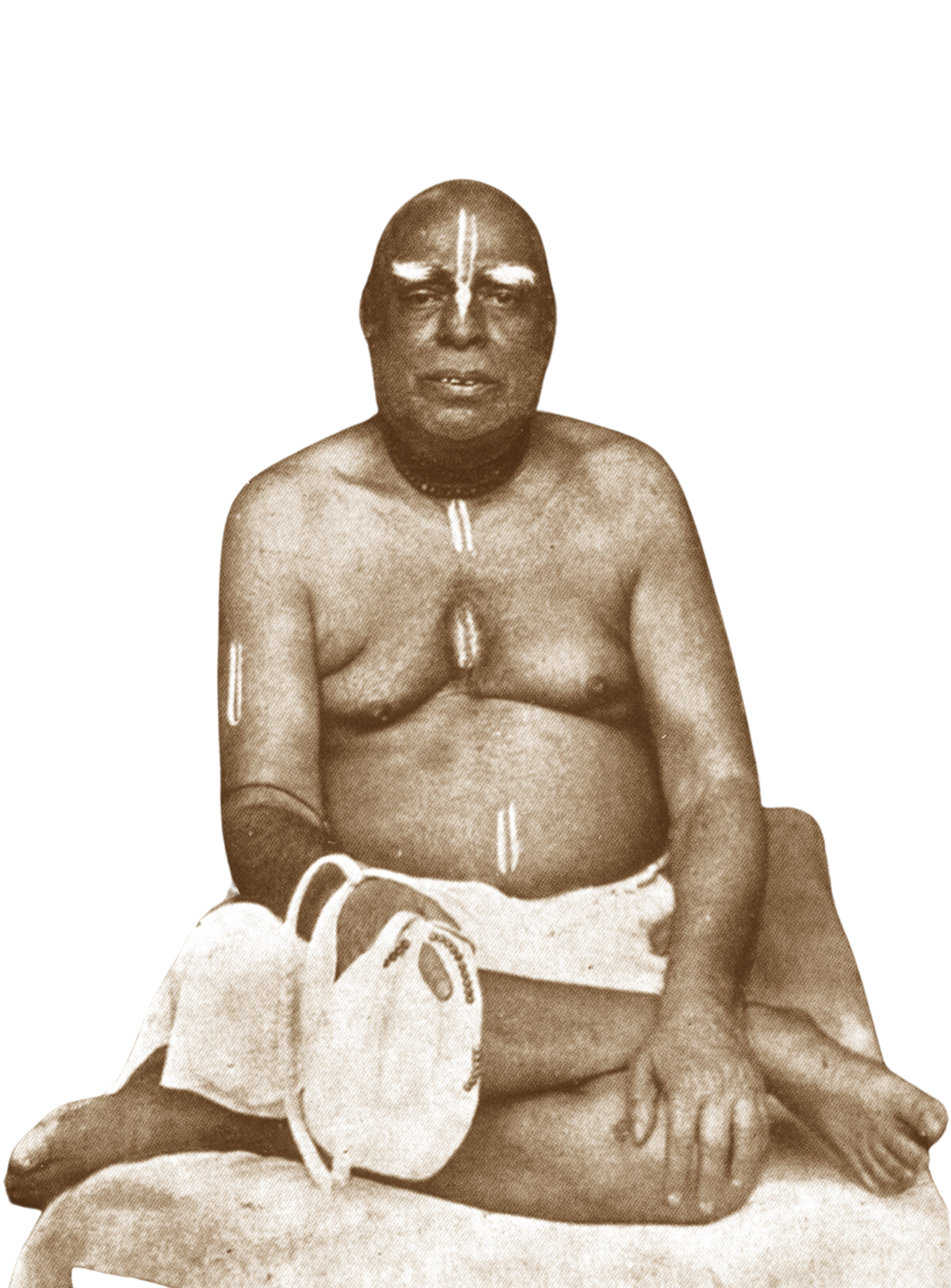 a little difference.
a little difference.
Śrīla Bhaktivedānta Nārāyaṇa Mahārāja: No difference. You should try to reconcile it. It may be that you do not fully understand. I know that you cannot understand. However, by doing bhajana — doing, doing, doing — you can come to that stage. Don’t try to understand through your intelligence. Try to understand through our Guru-varga (disciplic succession.) We should try to realize what our line of ācāryas have written. I cannot be different from Śrīla Bhaktivinoda Ṭhākura. What I am saying is his remnants. I try to reconcile Śrī Viśvanātha Cakravartī Ṭhākura, Śrī Rūpa Gosvāmī, Śrīla Bhaktivinoda Ṭhākura, and all other ācāryas. They are in one line, but they may manifest their explanations in so many different words.
Ananta Kṛṣṇa dāsa: Should we then understand that they are speaking the same thing, but…?
Śrīla Bhaktivedānta Nārāyaṇa Mahārāja: You should try to do more bhajana. Don’t try to understand by mental speculation. Try to do bhajana and pray that you can advance.
Ananta Kṛṣṇa dāsa: So they are saying the same thing but from different angles?
Śrīla Bhaktivedānta Nārāyaṇa Mahārāja: Yes. We are seeing it and trying to understand it from so many angles of vision. All the angles are correct. One person is telling that Kṛṣṇa never told lies, but Yaśodā Maiyā and all others like her tell that He did speak lies. What is the conclusion? You cannot understand. The understandings are from so many angles, but they are all true. Don’t make mistakes in your writing — saying that Nārāyaṇa Mahārāja is telling one thing, Śrīla Bhaktivinoda Ṭhākura is telling something else, and Śrīla Viśvanātha Cakravartī Ṭhākura and Rūpa Gosvāmī are telling something else.
Conversation II
Vraja-mohinī dāsī: I am your disciple from England, and it’s my birthday today.
Vrajanātha dāsa: It’s her birthday. She wants some special mercy.
(After asking her a few questions, Śrīla Bhaktivedānta Nārāyaṇa Mahārāja took some flower petals from his 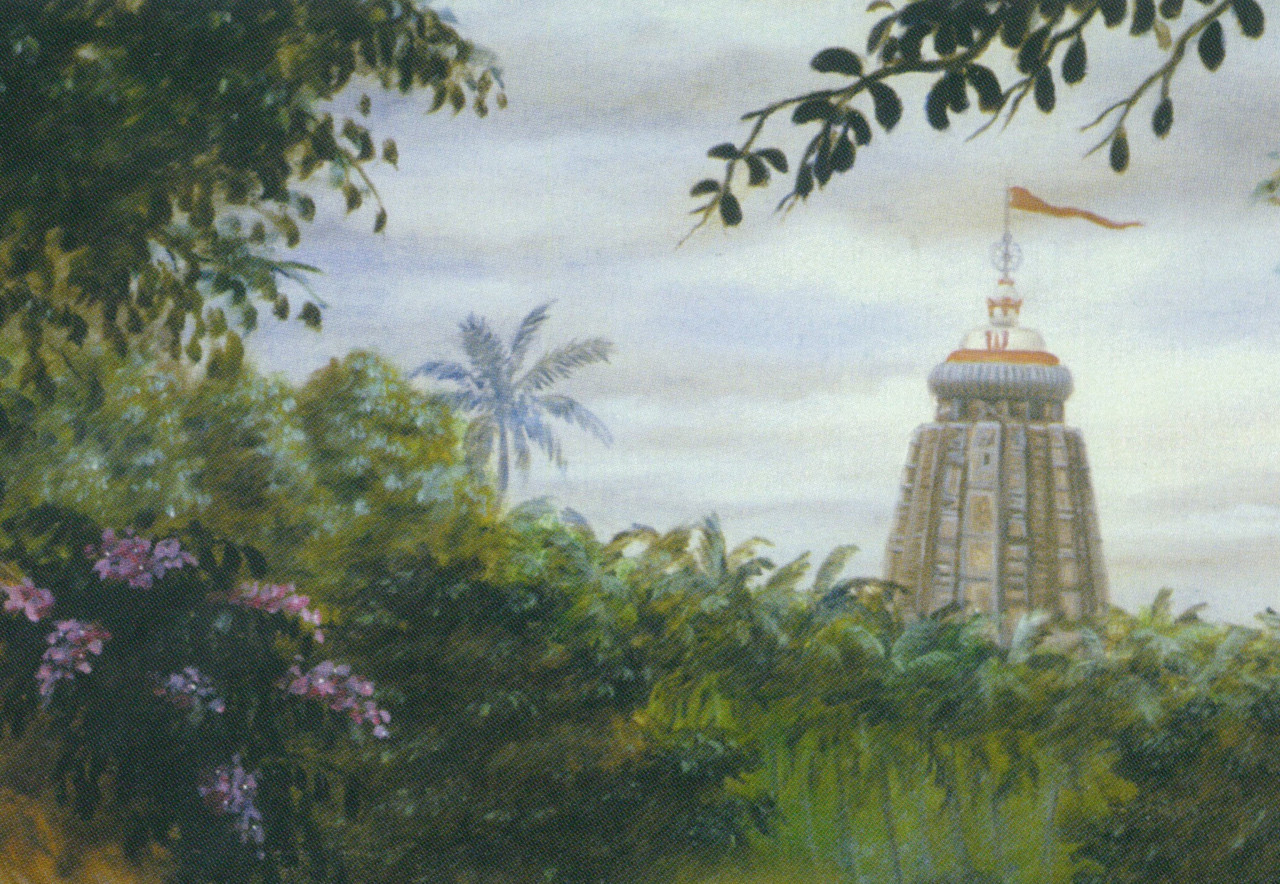 garland and, gently tossing the petals on the top of her head, chanted: “Maṅgalaṁ bhāvatu kalyāṇaṁ bhāvatu. Kṛṣṇa-bhakti bhāvatu”. She then showed Śrīla Bhaktivedānta Nārāyaṇa Mahārāja her 6″ mūrti of Mahāprabhu.)
garland and, gently tossing the petals on the top of her head, chanted: “Maṅgalaṁ bhāvatu kalyāṇaṁ bhāvatu. Kṛṣṇa-bhakti bhāvatu”. She then showed Śrīla Bhaktivedānta Nārāyaṇa Mahārāja her 6″ mūrti of Mahāprabhu.)
Vraja-mohinī dāsī: I have a mūrti of Caitanya Mahāprabhu. I found Him in Purī. He’s made from a siddha-bakula tree. I had a feeling in my heart to get this mūrti.
Śrīla Bhaktivedānta Nārāyaṇa Mahārāja: You want to put Him in your heart?
Vraja-mohinī dāsī: Yes.
Śrīla Bhaktivedānta Nārāyaṇa Mahārāja: Then you should keep Him always. How will you put Him there? By an operation?
Vraja-mohinī dāsī: I felt in my heart that I should have this mūrti.
Śrīla Bhaktivedānta Nārāyaṇa Mahārāja: But on the next day you may give Him up. Chant more. Try to know who is Śrī Caitanya Mahāprabhu and what His moods are. And try to reach those moods. From what has He been made?
Vraja-mohinī dāsī: Siddha-bakula tree.
Śrīla Bhaktivedānta Nārāyaṇa Mahārāja: Bakula tree? Mahāprabhu cannot be made of a bakula tree. He is transcendental. Is this (wood) transcendental?
Vraja-mohinī dāsī: I don’t know.
Śrīla Bhaktivedānta Nārāyaṇa Mahārāja: Try to chant Hare Kṛṣṇa — the transcendental names. Have strong faith in the name and then everything will come. If you have been worshipping the Deity for lakhs and lakhs of births, then one pure name will come. Try to go straight. (By chanting, you will be able to chant purely much more quickly.)
Conversation III
Śyāmarāṇī dāsī: I am not qualified to ask this question, but sometimes I need to know the answer because we 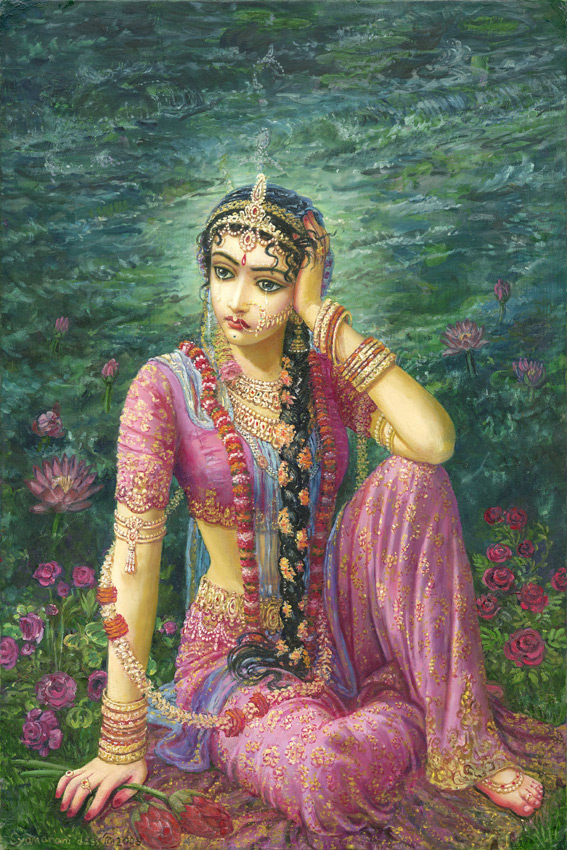 are sending out your lecture transcriptions, and different devotees have different opinions as to what you mean. In Śrīmatī Rādhārāṇī, is prema-vaicitya in anurāga or mādanākhya-mahābhāva?
are sending out your lecture transcriptions, and different devotees have different opinions as to what you mean. In Śrīmatī Rādhārāṇī, is prema-vaicitya in anurāga or mādanākhya-mahābhāva?
Śrīla Bhaktivedānta Nārāyaṇa Mahārāja: Always. Everywhere.
Śyāmarāṇī dāsī: Some devotees say it is only in the stage of anurāga.
Śrīla Bhaktivedānta Nārāyaṇa Mahārāja: Then you should listen to them, not me.
Śyāmarāṇī dāsī: No. So, in Rādhārāṇī, is prema-vaicitya higher than divyonmāda?
Śrīla Bhaktivedānta Nārāyaṇa Mahārāja: I cannot say this. But I can say that divyonmāda and prema-vaicitya in Vraja are more than in Dvārakā, and more than in Mathurā — Rādhikā’s prema-vaicitya and divyonmāda are more than that of anyone else. That I can tell.
Śyāmarāṇī dāsī: But when Rādhārāṇī is in Uddhava-kyārī in divyonmāda, is that higher, or is prema-vaicitya in Vṛndāvana higher?
Śrīla Bhaktivedānta Nārāyaṇa Mahārāja: You are not understanding all this. Your question is wrong. In Rādhā-kuṇḍa She is always with Kṛṣṇa. There She is always in mādanākhya-mahābhāva. That mādanākhya-mahābhāva contains everything — everything. And it is the highest of all moods. It is the last limit. It may be that in Uddhava-kyārī there is something of that. It may be that in Prema-sarovara, the highest prema — divyonmāda (divine madness at the time of separation), prema-vaicitya (thinking one’s lover is absent even while together) — everything — is there. But Uddhava-kyārī is not the highest because there is separation mood there. Separation mood is not mādana.
Source: Purebhakti.com
Image(s) made possible by Pixabay.com, Krishnapath.org and/or Bhaktiart.net
Unless indicated differently, all verse translations and quotes are from the books by Śrīla Prabhupāda (Vedabase.com)


